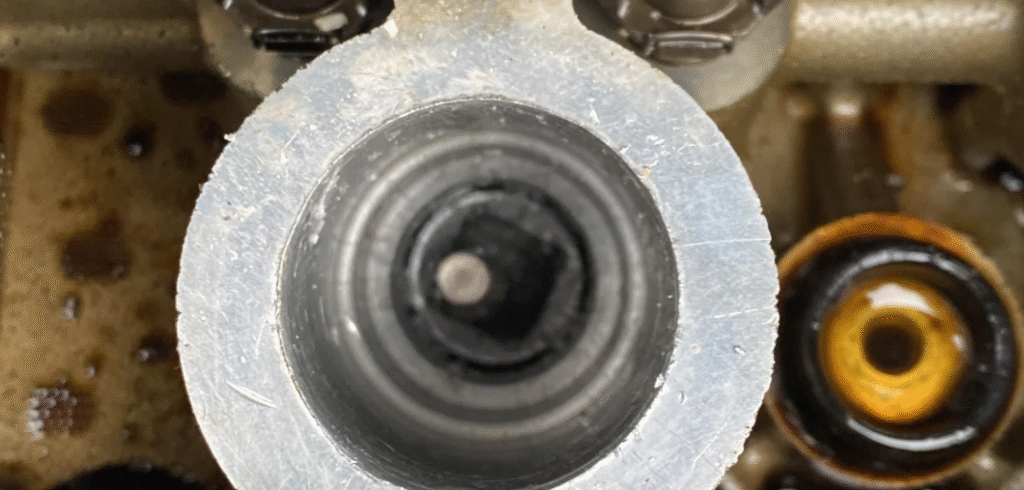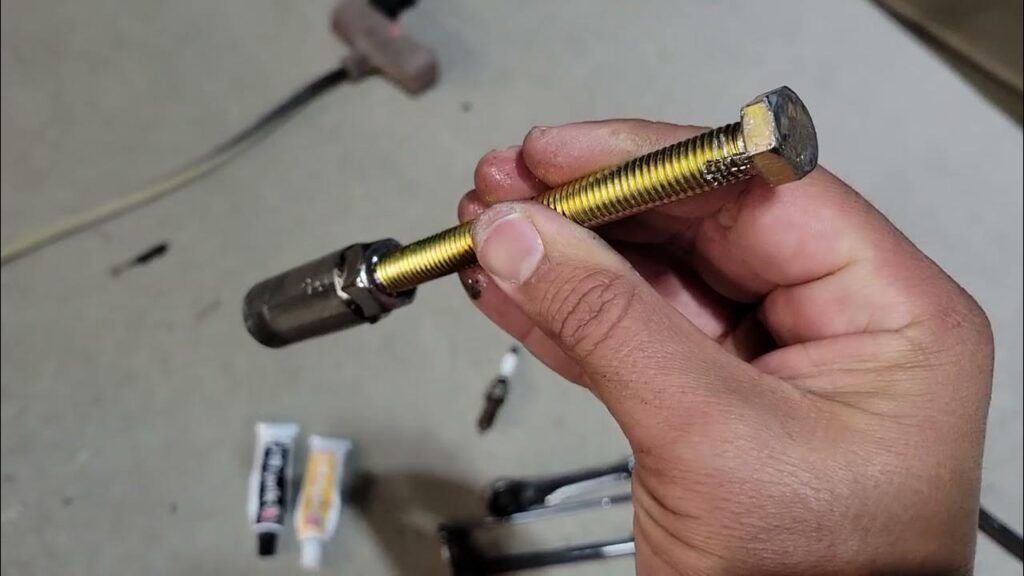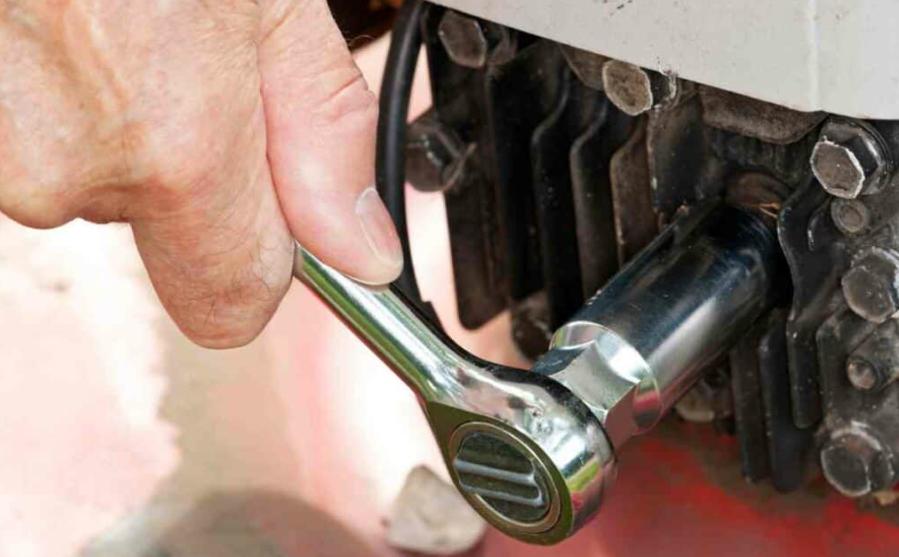A spark plug socket stuck on a plug can happen due to corrosion, over-tightening, or carbon build-up, making it difficult to remove. To resolve this, apply penetrating oil, use the right tools like a breaker bar or heat source, and carefully work to loosen the socket without damaging the surrounding components.
For a car lover, a car do-it-yourself mechanic, or even a layperson doing basic car upkeep, it is almost inevitable that you would, at some point in time, lose a spark plug socket. While yes, it plug is losing, it is a daunting moment in any car owner’s life. Do not panic. It does not have to be as intensive, or challenging as it seems. With some effort and determination, any user can safely unstick the socket and move on with maintaining or replacing the spark plug.
This document will review what a car can do with a bolt stuck in a socket. It will illustrate the unbolt step-by-step, and share pieces of unbolt to unscrew it while also avoiding it before it happens again.

Contents
- 1 Why Does a Spark Plug Socket Get Stuck?
- 2 Overcoming Resistance on a Stuck Spark Plug Socket
- 2.1 Step-by-Step Guide to Removing a Stuck Spark Plug Socket
- 2.1.1 Step 1: Get To Work On Your Tools
- 2.1.2 Step 2: Use Penetrating Oil
- 2.1.3 Step 3: Get On Your Ratchet Wrench
- 2.1.4 Step 4: Use the breaker bar as added support.
- 2.1.5 Step 5: Applying some heat and cold.
- 2.1.6 Step 6: Use some Needle-Nose pliers (If they are not covered)
- 2.1.7 Step 7: Gently Tap With A Rubber Mallet
- 2.1.8 Step 8: Scrub The Surface of The Spark Plug Threads
- 2.1 Step-by-Step Guide to Removing a Stuck Spark Plug Socket
- 3 Tips to Prevent a Spark Plug Socket from Getting Stuck in the Future
- 4 Frequently Asked Questions
- 5 Conclusion
Why Does a Spark Plug Socket Get Stuck?
It is fair to say that losing any piece to a car is frustrating. Yet with a suit of armor, it is even more annoying to lose a bolt. Understanding the why is best in these situations.
1. Rusted and Corroded
One of the most common issues when trying to remove a particularly stubborn spark plug socket is the socket getting corroded or heavily rusted. With enough time, the heat and moisture and the other stuff lurking around the engine bay is sufficient for the spark plug to develop rust. This rust then attaches itself to the socket and removing it becomes a tough task.
This issue becomes worse when there is a lot of humidity or the car is used during the rainy season, or where there is a lot of salt or dirt. This is an issue because rust, which is a form of corrosion, is known to cause metal to bond with other metal and that is exactly why it is a ‘metal lover’ or the number one enemy of all metal parts.
2. Exessive Tightening During Installation
If the spark plug has been directly tightened by you or a mechanic without much care, it could have formed a bond and kept the socket and the plug ‘together forever’. When the spark plug is fastened with extreme force, it becomes impossible to loosen with the most sophisticated of tools. This is because the threads endure the most damage, and thus the most abundant when trying to loosen.
3. Accumulated Carbon
Carbon deposits are products of combustion that are called combustion byproducts. Over time, this type of deposits can build up on the threads of certain spark plugs. This type of build up can make the seal quite tight, causing the socket to become stuck. In some cases, the carbon may create some type of vacuum between the spark plug and plug socket, causing the plug socket to become stuck.
4. Temperature Increase
Stuck spark plugs can also be caused by the increase in temperature associated with combustion. With the increase in temperature comes the dilation of certain materials, causing parts to become snugger. This snugger fit of parts may also be caused by the metal and socket plug becoming hot, thus causing the spark plug socket to become stuck.
5. Poor Quality Socket
In some cases, the stuck spark plug socket may not be the cause of the spark plug, but in fact, the spark plug socket. If the spark plug socket doesn’t fit well, it can become stuck and cause an even more frustrating situation. Either a shallow socket or smaller socket may, in some cases, result in the spark plug being stuck attached.
Overcoming Resistance on a Stuck Spark Plug Socket
Attempting to take on a task without being properly equipped is asking for trouble. In every situation, having the right tools is handy to increase the chances of accomplishing the task. In this case, having the right tools is essential to avoid inflicting damage on other components.
Make sure to gather these tools before starting:
Penetrating Oil: This is the most fundamental tool to try and remove the tight combination of metal against the spark plug. WD-40, PB Blaster, or Liquid Wrench helps the most to ease the burden of materials first. They decrease the adhesion to metal, and were made to ‘remove’ a such;
Spark Plug Socket: A ‘deep well’ a socket made for spark plugs particularly, is what most people refer to. Because of how ideally made it is, it is able to secure the spark plug and with the help of a wrench or ratchet, it is able to remove the spark plug with ease too. In the case of a spray plug socket socket, it is always good to check how well it would fit before proceedings.
Ratchet Wrench: A Ratchet Wrench is first and foremost used for the removal of spark plugs. As an advantage, it also aids in adjusting the torque and assists in covering the full motion needed. In the case of a stuck socket, this tool becomes most vital to A a hole the amount of downside needed to remove or loosen the socket.
Breaker Bars: Extra leverage can be needed to loosen tough or stuck parts and pieces, which is where a breaker bar comes in handy. It offers support for the torque needed when a ratchet wrench doesn’t simply do the trick.
Needle Nose Pliers: If part of the spark plug socket is exposed, needle nose pliers can assist you in gripping and twisting the socket in order to remove it. It is useful when space is tight or the socket is somewhat removed.
Rubber Mallet: This allows you to gently tap the socket with a light touch without harming the other parts of the equipment. This can be the go to tool when trying to break the corrosion or rust bond that is trying to keep the socket stuck.
Heat Source: A heated gas gun and propane torch can be used to heat the area around the spark plug and socket. Heating metal can assist with the rest of the corrosion.
Thread Chaser: If the threads of a spark plug hole, a thread chaser can be used to clean it. If the threads are obstructed with debris, it can be cleaned with the chaser.
Step-by-Step Guide to Removing a Stuck Spark Plug Socket
Now that you know the reasons why and what you will need, let’s get the real deal started. Here is how you can get a stuck spark plug socket off:
Step 1: Get To Work On Your Tools
You Should Wait Until The Engine Has Cooled Down: The longer you have the engine running, the riskier this task becomes. Burns are no joke, so in order to do this without inflicting injury on yourself, you should at the bare minimum, wait until the engine has fully cooled down.
You Should Disconnect The Battery: Wires and electricity tend to not get along with the completion of a spark socket, so the best way to go is to disconnect the car battery.
Free the Spark Plug From The Dust: Utilize the use of high velocity compressed air or a bruh, you need to clean the level of the spark plug. The reason you are doing this is so that no foreign stuff gets into the engine when you take off the socket.
Step 2: Use Penetrating Oil
Make Sure You Get The Oil In There: Put the penetrating oil on and around the spark plug threads and around the base of the socket. Again, the oil should be on the base of the socket.
Just Get Some Rest: Wait 15 to 20 minutes for the oil to dip into the awful rust or god forbid, corrosion.
Apply More Deep Heat If Needed: Some scenarios are more difficult, so you can do some more penetrating oil and wait a bit longer.
Step 3: Get On Your Ratchet Wrench
Go Get Your Correct Size Socket: Make sure you go to the tool room and get the socket that will go on the ratchet wrench.
Turn left: Apply pressure on the wrench going left and try to loosen up the socket without yanking the wrench, in order to try and not cause any damage. It might help to spin the valve in order to loosen it up.
If it doesn’t work: If the valve still isn’t moving, you can move to step 4 and try the breaker bar.
Step 4: Use the breaker bar as added support.
Put the socket on: Put the spark plug socket onto the breaker bar.
Put some pressure on it: Ease down on the breaker bar and try to loosen the spark plug. The added pressure from the long handle might help in loosening the socket.
Step 5: Applying some heat and cold.
Heat up the surrounding: Use a heat gun or a propane torch and heat the area surrounding the spark plug for a couple of minutes. The heat will help to loosen any parts that are stuck.
Cool down quickly: Grab a can of compressed air held upside down and cool the area. This will help the stuck parts in the area to loosen up a little bit.
Step 6: Use some Needle-Nose pliers (If they are not covered)
Grab the socket: If the socket has some parts visible, use your needle nose pliers to grip it.
Twisting and pulling: Gently twist and pull the socket out with some force.
Step 7: Gently Tap With A Rubber Mallet
Tap The Socket: If the socket is fusing with the example, use a rubber mallet to gently bop the socket. This can help reduce the rust or corrosion seal.
Apply More Penetrating Oil: If needed, apply penetrating oil and the process with the rubber mallet.
Step 8: Scrub The Surface of The Spark Plug Threads
Inspect the Threads: Once the socket is disengaged, inspect the spark plug threads for any damages or blockages.
Use a Thread Chaser: If the threads are crossed or snapped, use a thread chaser to clean or recondition.

Tips to Prevent a Spark Plug Socket from Getting Stuck in the Future
Tips To Reduce The Chances A Spark Plug Socket Might Become Stuck In The Future
Use Anti-Seize Lubricant: Prior to inserting the new spark plugs, a mini amount of anti-seize lubricant should be applied to the threads. This way the chances of corrosion are lowered.
Always Tighten To The Set Guidelines: Always tighten spark plugs to the manufacturer’s recommended torque. If a socket is super tight, chances are it will become stuck, and no socket should be loose.
Inspect, and Scrub Spark Plugs Often: Maintenance is key so be wary of that fact. For more than 87,000 miles, no more than 13 crosses of carbon should be present.
Pick the Right Tools: Always use the correct socket to remove a spark plug. If a socket does not fit properly, it can get stuck and cause damage to the spark plug and socket.
Let the Engine Cool Down: Before working on the spark plugs, it is best practice to allow the engine to cool down. This will greatly reduce heat complications and improve general working conditions.
Frequently Asked Questions
Here are some FAQs about spark plug socket stuck on plug –
Q1. Can WD-40 remove a stuck spark plug socket?
A1. Yes. WD-40 can loosen rust, but for worse case scenarios use penetrating oil like PB Blaster. It is made to harness and loosen corroded bonds.
Q2. Is it better to remove spark plugs when the engine is hot or cold?
A2. It is easier and safer to remove spark plugs when the engine is cold. This minimizes the potential risk of burns.
Q3. What if the spark plug socket is stuck in the engine?
A3. If the socket is stuck in the engine then you may need to remove the valve cover and use a slide hammer to properly remove the socket.
Q4: Can over-tightening cause the socket to get stuck?
A4: Yes, over-tightening spark plugs will cause the socket to stick due to the stronger bond made between the spark plug and socket.
Q5: Is it safe to apply heat to a stuck spark plug socket?
A5: Yes, controlled heat will allow the metal to expand and help loosen the rust and corrosion. No so much heat to cause damage.
Conclusion
While dealing with a stuck spark plug socket can be vexatious, it can be done quite efficiently with the right tools. In this case it has been outlined and if you follow it you will be able to take it off as safely as possible. Always avoid maintenance mishaps and use anti-seize lubricants to insure your spark plugs and sockets are functioning optimally.
This comprehensively guided information will allow you to unstuck a spark plug socket and use it to get the engine back to running as you are confident it will do so.
